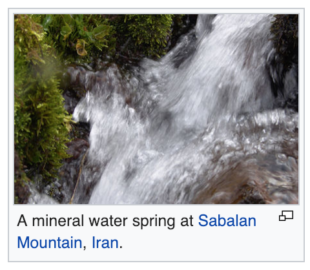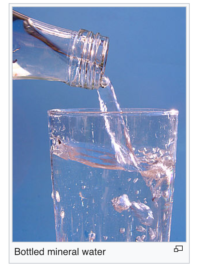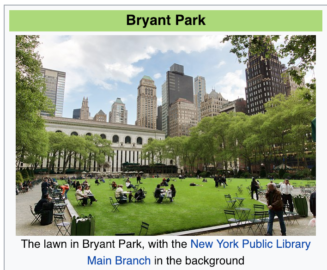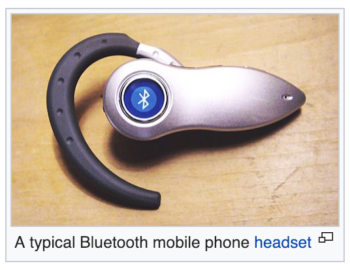Wiki Rabbit Hole: LaCroix to Bluetooth
Turn a borderline-addictive habit into an opportunity to learn more about the world.
Like previous Wiki rabbit holes, I stared blankly at my screen waiting for inspiration. Just to the right of my computer, a Passionfruit LaCroix sat half-full. Aha! And so we begin!
A quick refresher on the concept:
I often used Wikipedia to learn about something specific only to look up at the clock and discover I diverged from the initial path. This is commonly known as the Wiki Rabbit Hole or Wikihole. Instead of feeling somewhat disappointed with my reckless use of time, I framed my borderline-addictive habit into a constructive manner. For 45 minutes, I’m allowed to go anywhere on Wikipedia and learn as much as I can.
Link 1: LaCroix
LaCroix started in 1981 in LaCrosse, Wisconsin—a city I’m familiar with. It was a sparkling water meant to appeal to an anti-Perrier audience who felt the beverage too snobby. It sold okay in the Midwest. I remember as a ‘90s kid seeing cans of LaCroix in my grandpa’s garage; it was for old people. Then, a year ago I started drinking it and soon realized I wasn’t the only one who became a fan. I wanted a beverage with flavor and pop to it but no sugar. It was the answer.
In 2015, soda sales hit a 30 year low. The cause? Millennials, of course. LaCroix offered an alternative for a healthier conscious public.
Link 2: Mineral Water
 I wondered what the difference was between all the waters: sparkling, artesian, tap, mineral, well, purified, etc. Mineral water is taken from springs and keeps its natural elements such as salts and sulfur compounds. Interestingly, 17th and 18th century Europeans used to transport mineral water for spa and bathing purposes, believing it had therapeutic purposes. Today, over 4000 mineral water brands exist!
I wondered what the difference was between all the waters: sparkling, artesian, tap, mineral, well, purified, etc. Mineral water is taken from springs and keeps its natural elements such as salts and sulfur compounds. Interestingly, 17th and 18th century Europeans used to transport mineral water for spa and bathing purposes, believing it had therapeutic purposes. Today, over 4000 mineral water brands exist!
Link 3: Bottled Water
Bottled water was actually a thing before the 20th century. When water Chlorination eased the public of their concerns of water-borne diseases in their municipal water supply. In the late 20th century though, bottled water came roaring back. One reason was PET bottles (polyethylene terephthalate), which was the first bottle to withstand the pressure from carbonated liquids. They’re also 100% recyclable.
 Even after reading the wiki, it’s still hazy whether bottled water is a good thing or not. It takes 1.32 Liters of water to make 1 L of bottled water. Soft drinks require 2.02 liters of water per 1 L; beer takes 4 liters of water per 1 L; and wine 4.74 liters of water per 1 L. There’s much controversy around commercializing springs to sell bottled water at a large profit, but it’s also argued that if they didn’t, emergency responses requiring packaged water would be inefficient and wildly expensive. There’s been a recent movement to scale back bottle water usage as an outcome of environmental psychology.
Even after reading the wiki, it’s still hazy whether bottled water is a good thing or not. It takes 1.32 Liters of water to make 1 L of bottled water. Soft drinks require 2.02 liters of water per 1 L; beer takes 4 liters of water per 1 L; and wine 4.74 liters of water per 1 L. There’s much controversy around commercializing springs to sell bottled water at a large profit, but it’s also argued that if they didn’t, emergency responses requiring packaged water would be inefficient and wildly expensive. There’s been a recent movement to scale back bottle water usage as an outcome of environmental psychology.
Link 4: Environmental Psychology
Environmental psychology focuses on the effect of surroundings on individuals. I often work from my apartment, so this caught my eye. How can I be more productive in my space? Well, this wiki addressed more of public space. Environmental psychology research can help tackle problems like density and crowding, noise pollution, sub-standard living, and urban decay. Here are some things that can reduce the feeling of crowding:
- They provide light. It’s a bonus if they can be opened.
- High ceilings.
- Doors to divide space and provide access control
- Partitions to create separate, more intimate spaces.
- Ability of cognitive control (increasing lighting, ventilation, dividers)
A part of environmental psychology is place attachment. You can build an attachment to the environment, whether it’s beautiful or not. Time spent in a particular space or location can evoke emotions that often trump aesthetics.
Place attachment made me think of rural Wisconsin. It’s home. I’ve farmed the fields in the area for years. I love them. It’s not that I love farmland in general, but Ive built an intimacy with them: I know where the ravines are in each field, recognize trees, and massive stones. I even remember what songs or podcasts I listened to in particular areas of fields.
I wanted to see the application of environmental psychology and came across William H. Whyte, a writer and researcher who observed New York City pedestrians and revamped urban plazas. His ideas and techniques led to the non-profit organization Project for Public Spaces.
Link 5: Bryant Park
 Bryant Park is a public park located in Midtown, Manhattan. Last week I visited New York, so this interested me. Believe it or not, it was created by the New York governor in 1686! A lot of time passed and by the late 1970s it became a “no-go area” due to crime and deterioration. The Bryant Park Corporation, a private non-private organization, dedicated funding to improve it. Inspired by the work of William H Whyte, they lowered the park and eliminated hedges to increase street visibility, among other things. The renovation led to high acclaim and proved to be a great achievement in urban revival.
Bryant Park is a public park located in Midtown, Manhattan. Last week I visited New York, so this interested me. Believe it or not, it was created by the New York governor in 1686! A lot of time passed and by the late 1970s it became a “no-go area” due to crime and deterioration. The Bryant Park Corporation, a private non-private organization, dedicated funding to improve it. Inspired by the work of William H Whyte, they lowered the park and eliminated hedges to increase street visibility, among other things. The renovation led to high acclaim and proved to be a great achievement in urban revival.
Link 6: Hotspot (Wi-Fi)
In 2002, Bryant Park also became the first New York City park to offer free Wi-Fi. Internet has become a necessity of life now. Wi-Fi was first proposed in 1993 at a Networld+Interop conference in San Francisco. The Wireless Broadband Alliance projected 10.2 million public hotspots in 2018, up from 5.2 million in 2012. There were a lot of IT terms I didn’t follow and security issues that were over my head. I only had so much time, so I jumped to something more familiar to me.
Link 7: Bluetooth
 I use Bluetooth everyday with my speaker. So what exactly is it? It’s a technology that emits a short-range radio signal essentially! While Wi-Fi is set up to replace high-speed cabling, Bluetooth is meant to communicate with smaller devices and a low amount of data. Good to know. Time’s up.
I use Bluetooth everyday with my speaker. So what exactly is it? It’s a technology that emits a short-range radio signal essentially! While Wi-Fi is set up to replace high-speed cabling, Bluetooth is meant to communicate with smaller devices and a low amount of data. Good to know. Time’s up.
When I think about it, I started at my desk looking at my LaCroix can and ended only a foot away with my portable Bluetooth speaker! But in the middle, however, I explored the many water options available in the world, our relationship to our environments and how it affects us, and a bit of history in New York and the relentless wave of new technologies impacting our lives.
The point of the exercise is to generally learn more about the world around me. It’s not to become an expert on any of the particular wiki subjects I stumble across. I hear there are two philosophies to live life by: know everything about one subject or know a little about many subjects. I prescribe to the latter. It’s not because I feel it’s better—there’s no right or wrong—but I find myself interested in a lot of things. I’m curious to learn more about them. Performing this wiki rabbit hole activity gives me a guilt-free opportunity to set aside time to let my curiosity loose and have fun.
Do you ever go down a wiki rabbit hole on purpose? What are some of the things you’ve learned? What topics excite you most?